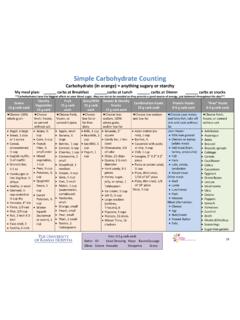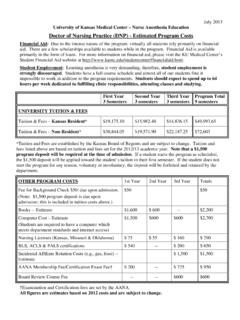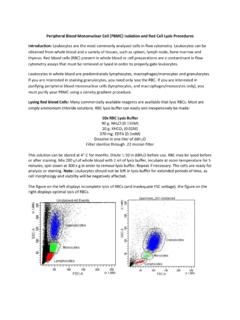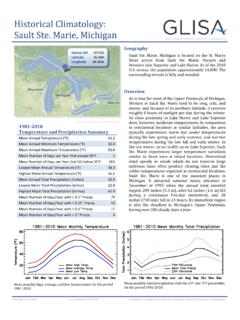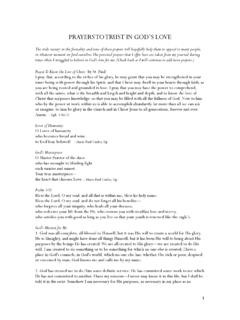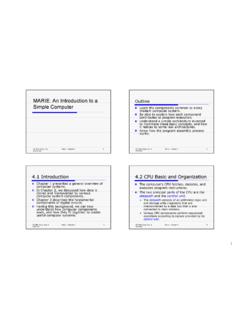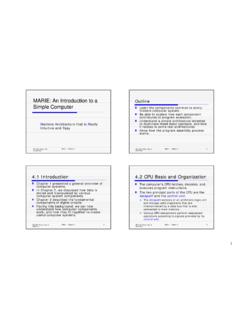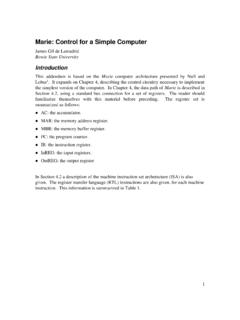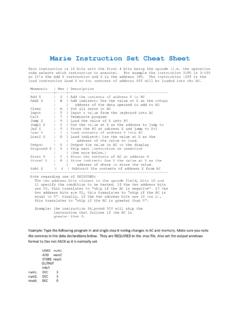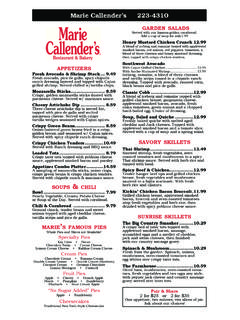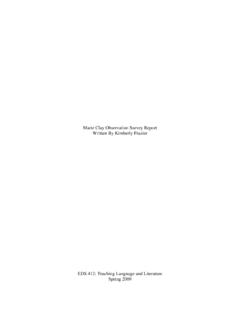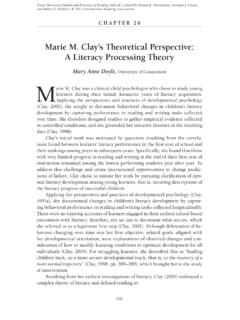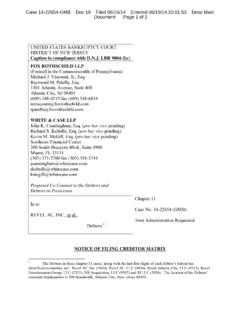Transcription of CHARCOT-MARIE TOOTH DISEASE - University of …
1 CHARCOT-MARIE TOOTH DISEASEGRAND ROUNDS-06/24/2016 KarthikaVeerapaneni,MDClinical Neurophysiology FellowDepartment of Neurology, University of Kansas Medical Center,Kansas City, USAC harcot-Marie TOOTH DISEASE (CMT)Synonyms charcot Marie TOOTH neuropathy Peronealmuscular atrophy Hereditary motor sensory neuropathy (HMSN) type 1 CHARCOT-MARIE TOOTH DISEASE (CMT)HistoryJean-Martin charcot (1825 1893)Pierre Marie (1853 1940)Howard Henry TOOTH (1856 1925) CHARCOT-MARIE TOOTH DISEASE (CMT)Introduction CMT is one of the hereditary motor & sensory neuropathies, a group of inherited disorders of the peripheral nervous system characterized by progressive loss of muscle tissue and touch sensation across various parts of the bodyCharcot-Marie TOOTH DISEASE ( CMT)Epidemiology CMT is the most commonly inherited neurological disorder(autosomal dominant or recessive or an X-linked pattern) Prevalence: 40 per 100,000 ( 1 in 2500) Males>Females Age of onset is variable according to subtype, penetrance, familial phenotype, and ascertainment bias CMT is found world wide in people of all races and ethnic groups Less common in African AmericansCharcot-Marie TOOTH DISEASE (CMT)Clinical Features Affects both motor and sensory nerves Symptom onset depends on type of CMT but usually begins in early childhood or early adulthood Most CMT1 symptoms starts by second decadeCharcot-Marie TOOTH DISEASE (CMT)Clinical Features Foot drop (usually the initial symptom) High stepped gait Frequent falls Hammer toes, high arched feet ( pescavus) or flat arched feet (pesplanus) are classical Muscle wasting Weakness in legs later progresses to hands and forearms Difficulty with fine motor skills Claw hands Cramps Usually no sensory symptoms in early stagesCharcot-Marie TOOTH DISEASE (CMT)
2 DeformitiesHammer ToesPesplanusPescavusCharcot-Marie TOOTH DISEASE (CMT)Clinical FeaturesCharcot-Marie TOOTH DISEASE (CMT)Clinical FeaturesInverted champagne bottle legs(Stork Legs):-Hypertrophy of the proximal muscles-Marked peroneal muscle atrophy with tapering of the distal extremities-Typical of advanced CMTC harcot-Marie TOOTH DISEASE (CMT)Clinical FeaturesSensory changes Usually no sensory symptoms in early stages Touch, vibratory and proprioceptive sensations are often damaged Pain is intact Neuropathic pain if present, severity varies (mild to severe and can interfere with daily life activities) Pain due to postural changes, skeletal deformations, muscular fatigue and cramping is fairly common in people with CMTC harcot-Marie TOOTH DISEASE (CMT)Clinical FeaturesOther features: Weakness inneck and shoulder muscles Tremor Involuntary grinding of teeth, squinting are prevalent and often go unnoticed by the person affected.
3 Breathing difficulties Difficulties in hearing and vision Scoliosis causing hunching and loss of height Malformed hip sockets Gastrointestinal problems -difficulty chewing, swallowing Difficulty speaking-atrophy of vocal cordsCharcot-Marie TOOTH DISEASE (CMT)Exacerbating Factors Emotional stress Periods of prolonged immobility Pregnancy Drugs:Amiodarone,Bortezomib,Cisplatin, carboplatin, Colchicine (extended use), Dapsone, Didanosine, Dichloroacetate, Disulfiram, Gold salts, Leflunomide, Metronidazole/Misonidazole(extended use),Nitrofurantoin, Nitrous oxide (inhalation abuse or vitamin B12 deficiency), Perhexiline(not used in the United States), Pyridoxine (high dose), Stavudine, Suramin, Tacrolimus, Taxols(paclitaxel, docetaxel), Thalidomide, Vincristine, ZalcitabineCharcot-Marie TOOTH DISEASE (CMT)VINCRISTINE IN CMT PATIENTS Acute worsening or onset of weakness in patients after vincristine administration of 2 to 4 mg for adults or mg/m2per dose in children Most of the patients had undiagnosed demyelinating forms of CMT (eg, CMT1A) Definite high risk for patients with CMT, including those who are asymptomatic and/or undiagnosed.
4 CHARCOT-MARIE TOOTH DISEASE (CMT)Pathophysiology/Etiology Pathophysiology is either a demyelinating process or an axonal process Etiology is intragenic mutation and/or DNA duplications or deletions More than 50 genes causing CMT have been identified Mutations usually affect one of the several myelin genes, but some affect the axonCharcot-Marie TOOTH DISEASE (CMT)Pathophysiology/Etiology Mutation results in defects of myelin structure, maintenance, and formation Demyelinating Schwann cells causes abnormal axon structure and function Some mutations affect the gene MFN2 which codes for mitochondrial protein Usually mitochondria travels down the long axons. Mutated MFN2 causes mitochondria to form large clusters or clots and prevents synapse from functioningCharcot-Marie TOOTH DISEASE (CMT)Defective Myelin Defective TOOTH DISEASE (CMT)Mode of inheritanceAutosomal Dominant( most common)Autosomal RecessiveX-linkedCharcot-Marie TOOTH DISEASE (CMT)Classification Genetically heterogeneous with more than 50 genes identified to date Classified as types 1 through 7 Each type additionally has many subtypes The major division comprises types 1 and 2, which together are the most common hereditary peripheral neuropathiesCharcot-Marie TOOTH DISEASE (CMT)TYPES CMT1 (Hypertrophic demyelinating) CMT2 (Axonal) CMT3 (Dejerine-sotta sdisease) CMT4 (Refsum sdisease-AR) CMT5 (Spastic Paraplegia) CMT6 (Optic Atrophy) CMT7 (Retinitis Pigmentosa) CHARCOT-MARIE TOOTH DISEASE (CMT)Classification-SubtypesVocal cord paralysis-CMT 2 CCharcot-Marie TOOTH DISEASE (CMT)
5 Classification-SubtypesCMT1 Demyelinating disorder of peripheral nerves Subtypes: 1A,1B,1C,1D,1E,1F Type 1A: 70 to 80 percent of CMT1 cases and 40-50% of all CMT patientsClinical features: -Symptoms typically start in the early second decade, but can manifest in infancy as well-Foot drop-Clumsy walking/difficulty running-Sensory loss is gradual and mainly involves proprioception and vibration-DeformitiesCMT1 Physical findings:Early changes: Loss of reflexes, pescavusfoot deformity, and hammer toes Distal calf muscle atrophy often occurs, causing the classic "stork leg deformity." Later changes: atrophy of the intrinsic hand and foot muscles Palpable enlargement of the peripheral nerves secondary to nerve hypertrophy kyphosis or scoliosis often Life expectancy: normal DISEASE exacerbation can occur in pregnancy, an effect that may be mediated by increased plasma progesterone sleep apnea can associate (in one study, 11 of 14 patients found to have sleep apnea)CMT1 SUB TYPES CMT1A: Associated with a Mb duplicationor, less commonly, a point mutation of the peripheral myelin protein 22 (PMP22) gene on chromosome Duplicationleads to overexpression of PMP22 and it gets inserted in the myelin sheath Point mutations alter distribution of the protein and therefore PMP22 partially accumulates in the Schwann cells Interestingly, patients with a Mb deletion at this site develop hereditary neuropathy with pressure palsy( HNPP)CMT1 CMT1B.
6 Originally known as peronealmuscular atrophy Point mutations in the myelin protein zero (MPZ) gene on chromosome 1q22, which cause overexpression of the major myelinstructural protein resulting in malfunctioningof myelin**Myelin protein-zero is normally expressed on the cell membrane of Schwann cells, and plays a major role in myelin membrane adhesionCMT1E: deafness is commonGene is either PMP22 or POCMT1 Roussy-Levy syndrome: CMT type 1 phenotype First described in 1926 Manifestations include postural tremor, gait ataxia, distal muscle atrophy, pescavus, areflexia, and mild distal sensory loss One family: Mutation in the extracellular domain of the MPZ gene, indicating type 1B DISEASE Another family: Partial duplication at chromosome , indicating type 1A DISEASE CMT2 Hereditary motor sensory neuropathy (HMSN) type 2 Synonym: Axonal CMT More heterogeneous disorder than CMT1 Classic features: distal weakness, atrophy, sensory loss, decreased deep tendon reflexes, and variable foot deformity The onset of symptoms usually is in the second decade of life The clinical course is similar to that of CMT1, but sensory symptoms, with loss of vibration and proprioception, typically predominate over motor symptoms, and peripheral nerves are not palpably enlarged.
7 Distal trophic ulcerations in the feet may form: before 5 years old Rapidly progressive with loss of strength below the knees by the second decade Sensory symptoms are present but overshadowed by the motor weakness Ambulation often is lost by mid-teensLate-onset form: between 35 to 85 yearsof age (median age 57) 6 families identified so far Genetically heterogeneous Autosomal dominant inheritance was demonstrated in two of the families, while inheritance patterns were unclear in the remaining four familiesCMT2 Genetics of CMT2 Heterogeneous majority are autosomal dominant Mitochondrial fusion protein mitofusin2 (MFN2) gene mutations, most common cause of the CMT2 phenotype, accounting for approximately one-third of autosomal dominantly inherited CMT2cases some MFN2 mutations cause early onset CMT2, autosomal recessive inheritance CMT2 Genetics of CMT2 Other Genes: MPZ gene mutations GARS-autosomal dominant mutations-CMT2D(**same gene for HMN too) NEFL gene mutations, both autosomal dominant and recessive Dynamin2 (DNM2) gene mutations MME gene mutations, autosomal recessive CMT2 X-linked and autosomal recessive inheritance CMT2 SUB TYPES CMT2A:most common CMT2 phenotype and maps to chromosome 1p35-36.
8 Gene is mitochondrial fusion protein mitofusin2 (MFN2) Other subtypes:CMT2B CMT2C Vocal Cord ParalysisCMT2D Arms>legsCMT2E ,CMT2F ,CMT2G ,CMT2I ,CMT2K, CMT2L ,CMT2S CMT3 HMSN/CMT3 Genetically heterogeneous. Severe, early-onset peripheral neuropathies Inability of the Schwann cells to produce normal myelin, resulting in thin, poorly formed myelin Two diseases:1. Dejerine-Sottassyndrome2. Congenital hypomyelinatingneuropathyCMT3 Dejerine-Sottas syndrome Severe demyelinating neuropathy clinically evident in early infancybecause of hypotonia Delayed motor development, prominent sensory loss, distal followed by proximal weakness, absent reflexes, ataxia, and profound slowing of nerve conduction velocities to 10 m/sec Scoliosis appears early and progresses with time, and contractures develop Progression is slow, oftenwith ambulation maintained through adult life CMT3 Dejerine-Sottas syndromeGenetics: Mutations in the PMP22 gene (as in CMT1A), the MPZ gene (as in CMT1B) and the EGR2 gene (as perhaps occurs in CMT1C) Autosomal recessive and several dominant heterozygous forms have been describedHistology: Thin myelin sheaths and large onion bulb formationEMG/NCS.
9 Profound slowing of nerve conduction velocities to 10 m/secCMT3 Congenital hypomyelinatingneuropathy Presents at birth with profound hypotoniaand contractures Feeding difficulties and respiratory distress often lead to death in infancy spontaneous improvement in motor function with increasing age have been reported in several cases one patient completely recovered by four months CMT3 Congenital hypomyelinatingneuropathyGenetics: genetically heterogeneous mutations in PMP22 gene, MPZ gene mutations , early growth response 2 gene (EGR2) and the myotubularinrelated 2 gene (MTMR2) most cases-autosomal dominant, but rare autosomal recessive cases have been reportedHistology: absent myelin without evidence of inflammation, myelin breakdown, or onion : Conduction velocities are either absent or extremely slowCharcot-Marie TOOTH DISEASE (CMT)Hereditary neuropathy with liability to pressure palsies (HNPP) Focal episodes of weakness or sensory loss and focal slowing of motor never conduction velocities.
10 Test for PMP22 deletion and point mutationsCharcot-Marie TOOTH DISEASE (CMT) DiagnosisClinical History( *including family history):-Weakness in muscles of legs/arms, foot drop, deformities( pes cavus, pes planus and hammer toes) -Family history of high arched feet(lack of family history does not rule out CMT)-usually no sensory symptoms reportedPhysical Examination:-distal weakness, proximal hypertrophy-foot deformities, Inverted champagne bottle legs(Stork Legs)-DTRs reduced or absent in CMT patients-decreased vibratory and proprioceptionon examCharcot-Marie TOOTH DISEASE (CMT) DiagnosisSymptoms and signs alone do not lead to diagnosisEMG/NCS and genetic testing are needed to confirm the diagnosisNerve biopsy is not indicatedCharcot-Marie TOOTH DISEASE (CMT) DiagnosisEMG/NCS:CMT1:-diffusely and equally decreased conduction velocities in demyelinating form-In every nerve tested, both sensory and motor, roughly the same degree ofmarked slowing is found-CMT1 median motor NCV is around 15-25 m/s-consider testing of family members as neededCharcot-Marie TOOTH DISEASE (CMT) DiagnosisEMG/NCS:CMT2:Normal or mildly reduced nerve conduction velocity(>38 m/sec) with decreased amplitude CMTX: 25-40 m/sec Distal intermediate CMT: 15-50 m/sec Dejerine-Sottas syndrome: <10 m/secCharcot-Marie TOOTH DISEASE (CMT) Diagnosis Nerve Biopsy.
